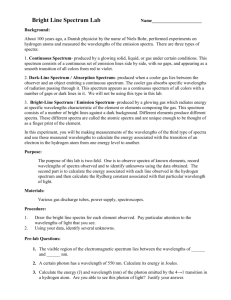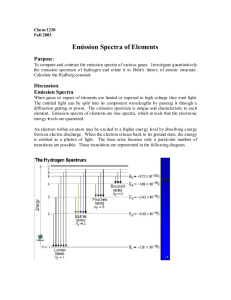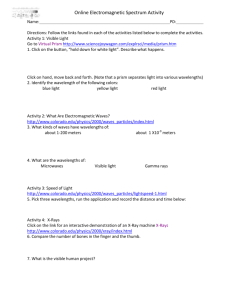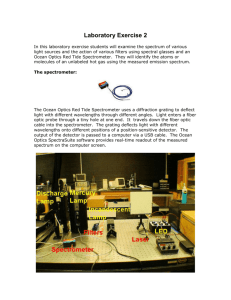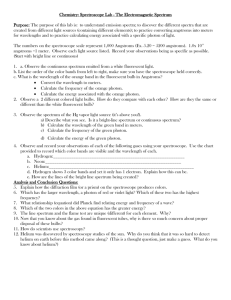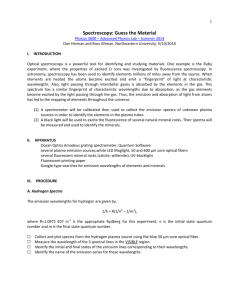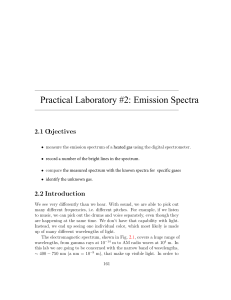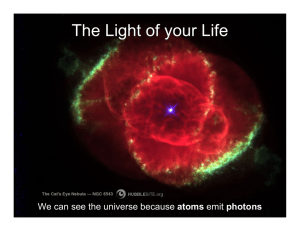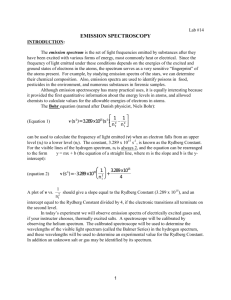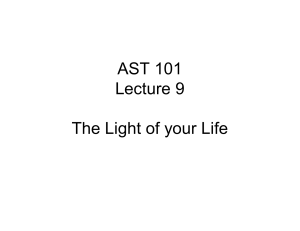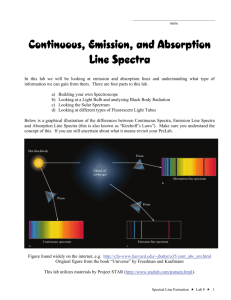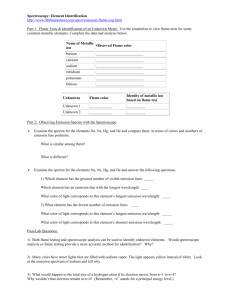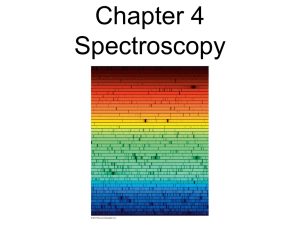Below are two examples of the same emission spectrum
advertisement
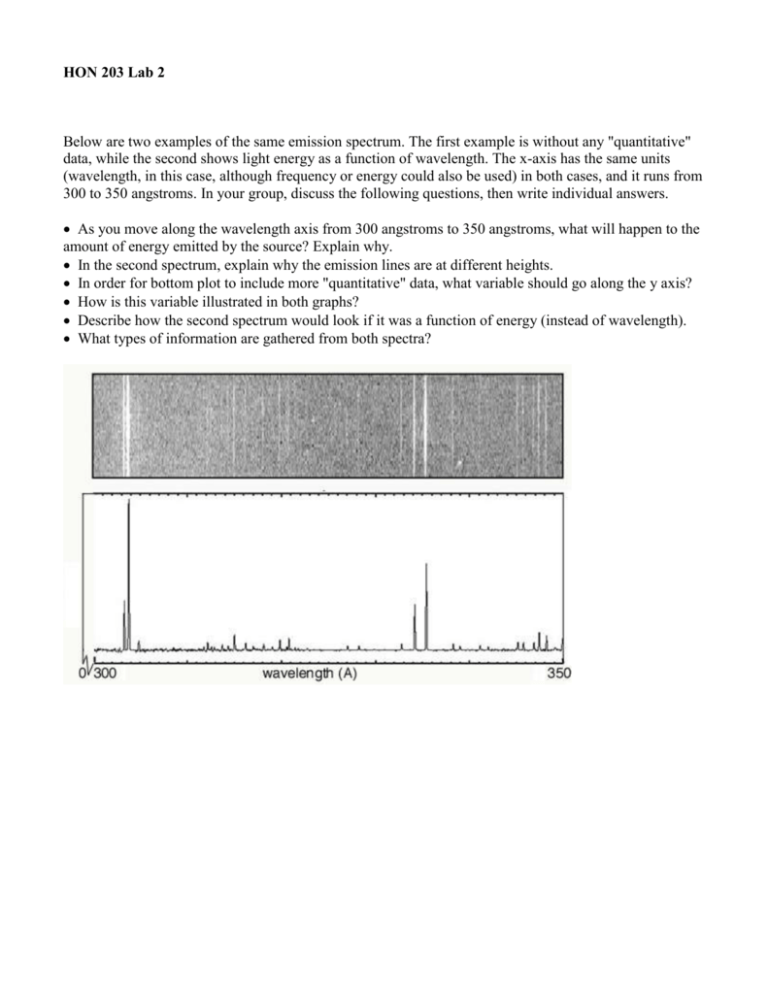
HON 203 Lab 2 Below are two examples of the same emission spectrum. The first example is without any "quantitative" data, while the second shows light energy as a function of wavelength. The x-axis has the same units (wavelength, in this case, although frequency or energy could also be used) in both cases, and it runs from 300 to 350 angstroms. In your group, discuss the following questions, then write individual answers. As you move along the wavelength axis from 300 angstroms to 350 angstroms, what will happen to the amount of energy emitted by the source? Explain why. In the second spectrum, explain why the emission lines are at different heights. In order for bottom plot to include more "quantitative" data, what variable should go along the y axis? How is this variable illustrated in both graphs? Describe how the second spectrum would look if it was a function of energy (instead of wavelength). What types of information are gathered from both spectra? HON 203 Lab 3 The following spectrum represents the energy state of the element, carbon. Carbon's emission lines in the visible range are a function of wavelength from 4,000 to 7,000 angstroms. You are going to create a graphical representation of carbon's spectrum from the photographic representation. Refer to the example above to help. At the particular wavelengths, illustrate the varying brightness of carbon's emission lines. Notice that in the photographic representation of the spectrum there is an underlying continuum of emission, in addition to the bright spectral lines. This continuum is due to contamination of the spectrum by ambient light, such as small amounts of white light that are picked up by the spectrometer. Your graphical representation should include this low level of emission at all wavelengths as well as carbon's spectral line features. Below you are given spectra for both hydrogen and helium. For each element, select two of the brightest emission lines at the particular wavelengths and measure the wavelengths. The scale of the spectrum is indicated by the ruler below. Solve for the frequency and energy of these lines, using the relationships between wavelength and requency and between frequency and energy. (Hint: You will have to manipulate an equation.) After the flame test, you will complete the same calculations for the following elements: sodium and calcium.







